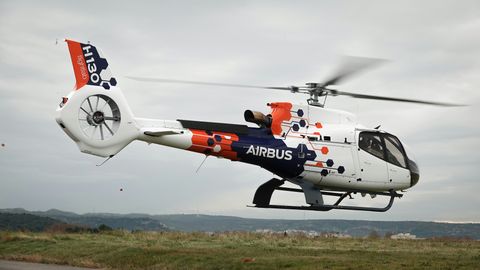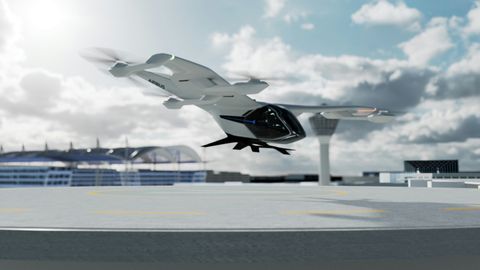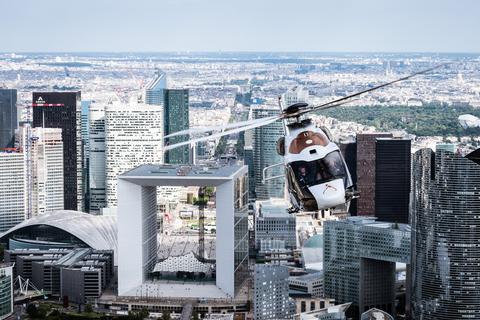Over the past 50 years, helicopters’ CO2 emissions have been reduced by 50% thanks to a variety of engine innovations that deliver more power with fewer emissions. At Airbus, we are committed to taking more ambitious steps to reduce the environmental footprint of our helicopters.
Three times more power, 50% fewer CO2 emissions
Today’s helicopters play a key role in missions that help preserve the environment, such as firefighting operations or scientific projects requiring air transportation. Pioneering new propulsion systems that make flying more efficient is the latest area in which helicopters are aiming to make significant contributions.
Helicopters account for less than 1% of the aviation industry’s CO2 emissions, but efforts are underway to continue to reduce this figure. Research has shown that fuel is the main source of CO2 emissions (95%) throughout a helicopter’s lifecycle.
Thanks to joint efforts with engine manufacturers over the last five decades, the compression ratios and efficiency of helicopter turbines have increased to deliver the following results:
- The newest-generation engines offer three times more power and a 50% reduction in CO2 emissions compared to their counterparts 50 years ago.
- Our next-generation twin-engine H160 benefits from a 15% reduction in fuel burn compared to the previous class of engines, thanks to the Safran Arrano engine.
- Additional fuel savings can be attributed to new vehicle aerodynamics and mass improvements, which are already in place on the current range.
Partnering to take aim at carbon emissions
Airbus Helicopters is involved in a variety of research projects that aim to reduce helicopters’ CO2 emissions. A key example is the European Union’s Clean Sky and Clean Aviation programmes.
- Clean Sky 2: Working with 40 partners in 13 European countries, Airbus Helicopters has developed the high-speed helicopter demonstrator Racer, which aims to optimise the blend of speed, cost-efficiency and mission performance. The current helicopter product range could also benefit from the testing of the Racer’s innovative eco-mode feature – using one or two engines depending on the flight phase – and which could account for an additional 15% reduction in CO2 emissions.
- Clean Aviation: The Clean Aviation Joint Undertaking is the European Union’s leading research and innovation programme for transforming aviation towards a sustainable and climate-neutral future. Airbus Helicopters participates in three Clean Aviation projects aiming to mature key electrification technologies for the aviation sector, in particular hybrid-electric techno bricks for helicopters.
- National research programmes have also been launched in France and Germany that aim to investigate and deploy the use of alternative fuels, as well as pave the way towards hybridisation and electrification technologies, which would contribute to reducing helicopter CO2 emissions.
Decarbonisation drivers for helicopters
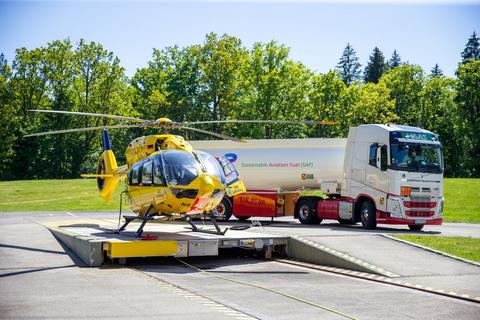
Deploying Sustainable Aviation Fuel
All Airbus helicopters are certified to fly with up to a 50% blend of SAF, which represents a 40% reduction in net CO2 emissions. SAF is currently used for all Airbus helicopter operations in France and Germany and our aim is to have all our helicopters capable of operating with 100% SAF by the end of the decade.
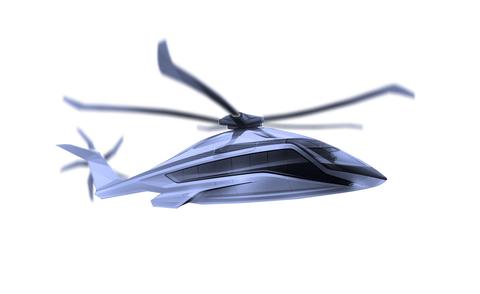
Exploring hydrogen
This source of power is non-carbon emitting and could be used in two main ways for helicopters: replacing kerosene in modified turboshafts or powering a fuel cell to power a fully electric propulsion system. Hydrogen techno-bricks could be mature enough to fly on a helicopter demonstrator as early as 2029.

